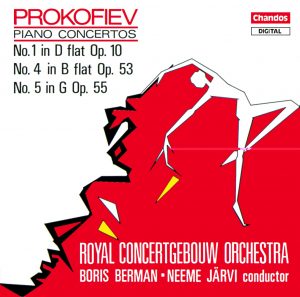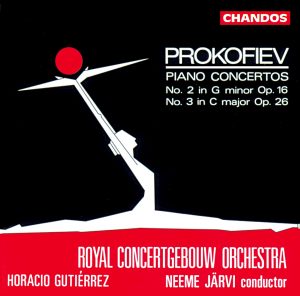 Já se passaram dez anos desde que postei esta integral dos Concertos de Prokofiev com a direção do Neeme Järvi. Muita coisa aconteceu neste meio tempo, na época nem imaginava que estaria atualizando estes links em 2021. Também não passava pela cabeça de ninguém que sofreríamos uma pandemia nestas proporções em que estamos sofrendo atualmente. Meus cabelos ainda não tinham ficado brancos, enfim, são dez anos vivendo em uma realidade totalmente diferente.
Já se passaram dez anos desde que postei esta integral dos Concertos de Prokofiev com a direção do Neeme Järvi. Muita coisa aconteceu neste meio tempo, na época nem imaginava que estaria atualizando estes links em 2021. Também não passava pela cabeça de ninguém que sofreríamos uma pandemia nestas proporções em que estamos sofrendo atualmente. Meus cabelos ainda não tinham ficado brancos, enfim, são dez anos vivendo em uma realidade totalmente diferente.
O colega René Denon pediu estas gravações e pedi um tempo para encontrá-las, pois lembrava do impacto que senti quando as ouvi pela primeira vez. Curiosamente, encontrei-as rapidamente.
Estou devendo estes concertos desde o começo do ano, e confesso que por algum motivo acabei deixando-os de lado. Pois bem, aí estão a primeira parte dos Concertos para Piano de Prokofiev com o Neeme Järvi (lembrando que postei as sinfonias com este mesmo regente no começo do ano).
Como hoje é quinta feira e ficamos quase vinte e quatro horas fora do ar, resolvi fazer uma postagem rápida, daquelas vapt-vupt, aproveitando que o arquivo já estava no megaupload há pelo menos dez meses, aguardando pacientemente sua vez.
O solista é o excelente Boris Berman, um especialista na obra de Prokofiev.
01 – Piano Concerto No. 1 in D flat major Op. 10 – Allegro brioso
02 – Andante assai
03 – Allegro scherzando
04 – Piano Concerto No. 4 in B flat major Op. 53 – I. Vivace
05 – II. Andante
06 – III. Allegro moderato
07 – IV. Vivace
08 – Piano Concerto No. 5 in G major Op. 55 – I. Allegro con brio
09 – II. Moderato ben accentuato
10 – III. Toccata. Allegro con fuoco
11 – IV. Larghetto
12 – V. Vivo
Boris Berman – Piano
Royal Concertgebow Orchestra
Neeme Järvi – Conductor
 Pois bem, senhores, concluindo esta caixa, aqui estão os dois Concertos para piano mais famosos de Prokofiev, o Segundo e o Terceiro. É difícil dizer qual deles é o meu preferido, creio que na verdade gosto dos cinco, mas esta introdução melódica do Segundo é de partir os corações mais duros.
Pois bem, senhores, concluindo esta caixa, aqui estão os dois Concertos para piano mais famosos de Prokofiev, o Segundo e o Terceiro. É difícil dizer qual deles é o meu preferido, creio que na verdade gosto dos cinco, mas esta introdução melódica do Segundo é de partir os corações mais duros.
Horácio Gutiérrez me era desconhecido até então, mas o rapaz é um assombro. É um virtuose de mão cheia que conhece muito bem seu instrumento, e não se deixa pegar nas armadilhas que Sergey colocou, e não são poucas. Os clientes da amazon foram quase unânimes em dar cinco estrelas à esta gravação, e com razão.
E porque hoje é sábado, usando uma frase muito usada no blog do nosso amigo Milton Ribeiro, vou deixá-los por aqui, e sair para aproveitar o dia.
Boa audição.
Serguei Prokofiev – Piano Concertos nº 2 in G Minor, op. 16, Piano Concerto nº3, in C Major, op. 26
01 – Piano Concerto No. 2 in G minor Op. 16 – I. Andantino – Allegro
02 – II. Scherzo. Vivace
03 – III. Intermezzo. Allegro moderato
04 – IV. Finale. Allegro tempestuoso
05 – Piano Concerto No. 3 in C major Op. 26 – I. Andante – Allegro
06 – II. Tema. Andantino – Variations 1-5 – Tema. L’istesso tempo
07 – III. Alegro ma non troppo
Horácio Gutiérrez – Piano
Royal Concertgebow Orchestra
Neeme Järvi – Conductor
FDPBach

